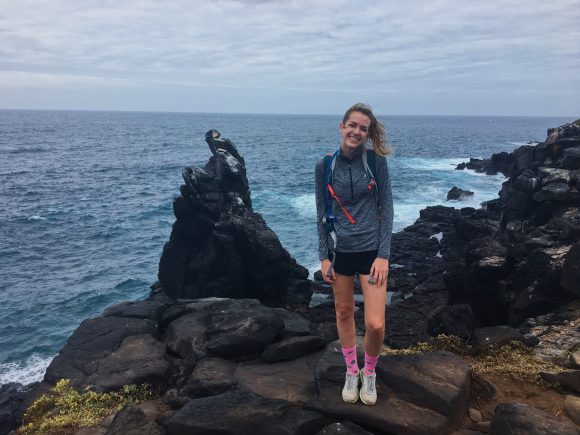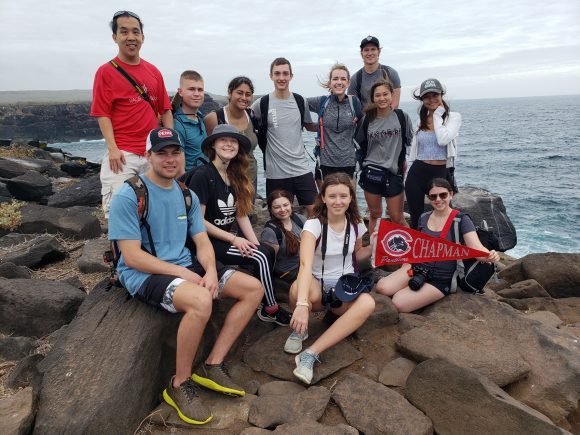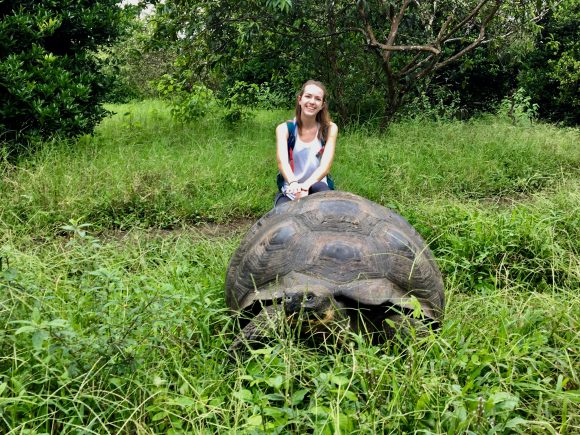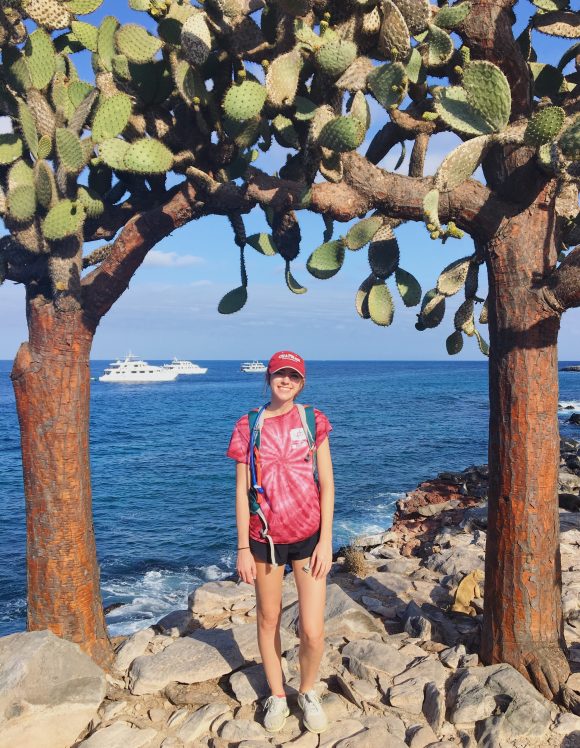Following Darwin Interterm 2020 in the Galapagos
February 7, 2020
Sarah Otto ’20 connects her passion for marine science to the unique environmental system in the Galapagos.
 As a biology major emphasizing in evolution and ecology, I always believed the Galápagos Islands to be some mystical land where Charles Darwin developed his theory of evolution. I’ve read countless books and literature on the island’s role in forming Darwin’s groundbreaking ideas. Yet, all my readings and lectures made it seem as if the Galápagos were a fictional setting stolen from an adventure novel. I never thought I’d step foot on the islands, that is, until I enrolled in the Galápagos interterm travel course.
As a biology major emphasizing in evolution and ecology, I always believed the Galápagos Islands to be some mystical land where Charles Darwin developed his theory of evolution. I’ve read countless books and literature on the island’s role in forming Darwin’s groundbreaking ideas. Yet, all my readings and lectures made it seem as if the Galápagos were a fictional setting stolen from an adventure novel. I never thought I’d step foot on the islands, that is, until I enrolled in the Galápagos interterm travel course.
 For nine days, I traveled from island to island with thirteen other students and two Schmid professors, Dr. Hsu and Dr. Waldrop. We would spend our mornings and late afternoons hiking amongst the diverse environments that enabled us to get up close and personal with the wildlife. The animals only had a curiosity for humans, not fear. They would rest right off of pathways and simply stare at us while we walked by. We were as much a spectacle for them as they were for us. The Galápagos course offered me a unique experience to see organisms, some found nowhere else in the world, in their natural environment with no fence or wall between us.
For nine days, I traveled from island to island with thirteen other students and two Schmid professors, Dr. Hsu and Dr. Waldrop. We would spend our mornings and late afternoons hiking amongst the diverse environments that enabled us to get up close and personal with the wildlife. The animals only had a curiosity for humans, not fear. They would rest right off of pathways and simply stare at us while we walked by. We were as much a spectacle for them as they were for us. The Galápagos course offered me a unique experience to see organisms, some found nowhere else in the world, in their natural environment with no fence or wall between us.
 Each island offered a different adventure in a new environment. We walked through a crystal blue lagoon lined with lush mangroves one day and hiked down giant crater pits another. The terrain and animals seen on each island varied, making each day exciting and new. One island held vibrant marine iguanas with red and blue coloring, while another held giant 600-pound tortoises that spent their days eating and bathing. These organisms often made me recall stories of how Darwin used to throw iguanas into the water or how he used to ride around on giant tortoises (although I knew that the Galápagos National Park would not be too pleased if I tried to do the same!)
Each island offered a different adventure in a new environment. We walked through a crystal blue lagoon lined with lush mangroves one day and hiked down giant crater pits another. The terrain and animals seen on each island varied, making each day exciting and new. One island held vibrant marine iguanas with red and blue coloring, while another held giant 600-pound tortoises that spent their days eating and bathing. These organisms often made me recall stories of how Darwin used to throw iguanas into the water or how he used to ride around on giant tortoises (although I knew that the Galápagos National Park would not be too pleased if I tried to do the same!)
Of everything we did, my favorite sights and memories came from snorkeling. My passion for biology is marine science and it was beyond incredible to see my knowledge of marine ecosystems come to life before my eyes. I swam in hoards of schooling fish, swam with Galápagos sharks, and dove alongside sea turtles. However, above all, I discovered the playful nature of sea lion pups and came to the conclusion that they are essentially water dogs. They would approach me in the water as if enticing me to play, and once I started swimming along with them, they would twirl around me, flip upside-down, and blow out bubbles. Even as I started to leave the area, they would follow in hopes that I would swim with them some more. I found peace in that moment, directly interacting with the wonders of the ocean.
 Overall, this was one of the most memorable trips of my life. For me, it was not just about taking a trip to the Galápagos. It was about connecting my evolution and marine biology knowledge to personal observations made during the trip. It was learning things first hand by witnessing them, instead of by reading about it in a textbook. It was a connection among peers and among nature. It was solidifying my love for marine biology and confirming the desire to pursue a career in that field. It was following in Darwin’s footsteps.
Overall, this was one of the most memorable trips of my life. For me, it was not just about taking a trip to the Galápagos. It was about connecting my evolution and marine biology knowledge to personal observations made during the trip. It was learning things first hand by witnessing them, instead of by reading about it in a textbook. It was a connection among peers and among nature. It was solidifying my love for marine biology and confirming the desire to pursue a career in that field. It was following in Darwin’s footsteps.
ENV 227: Darwin and the Galapagos Travel Course runs every interterm. Applications open in August for the following term. For a list of current Travel Courses, visit the Center for Global Education.


